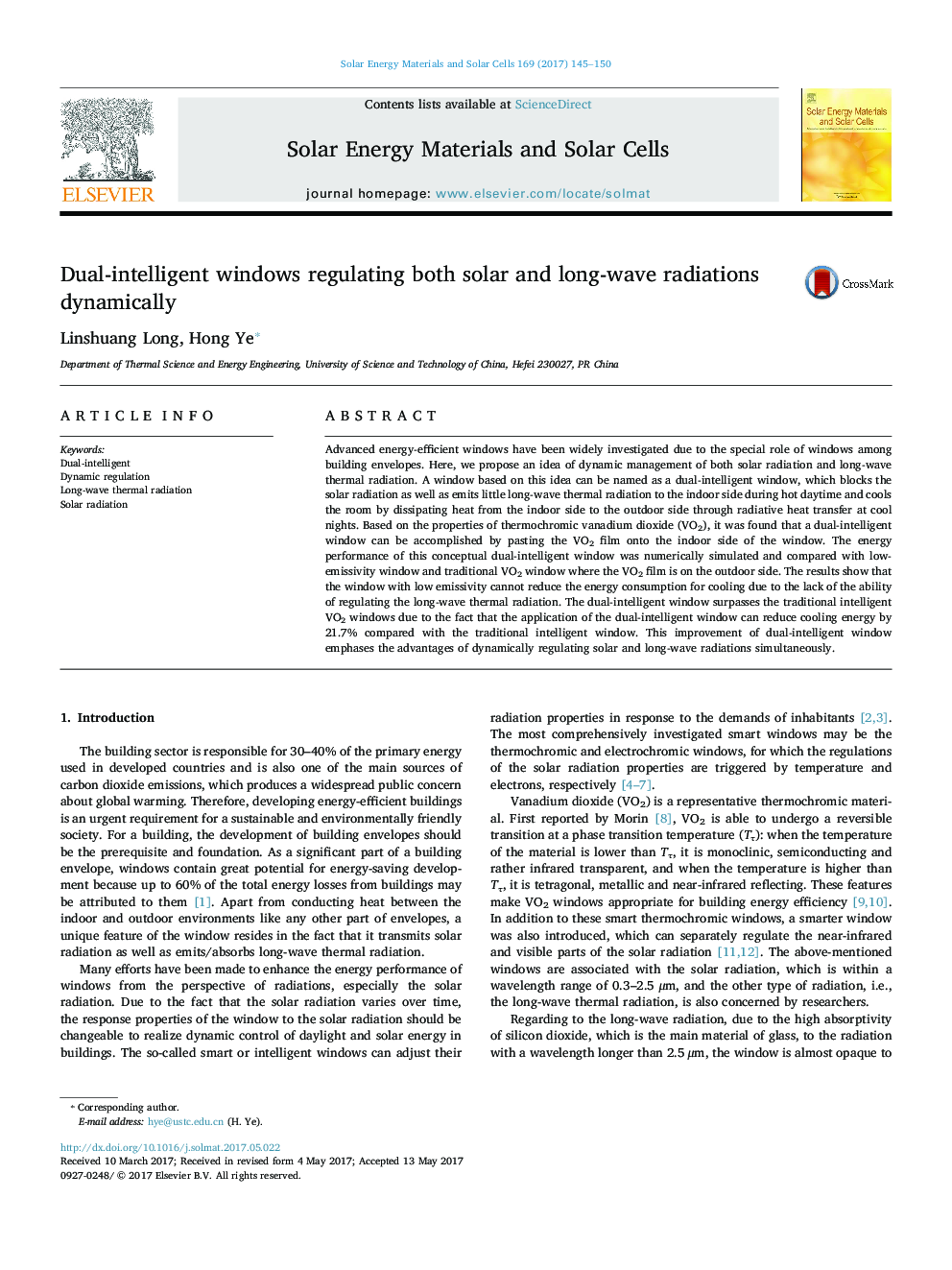| Article ID | Journal | Published Year | Pages | File Type |
|---|---|---|---|---|
| 4758748 | Solar Energy Materials and Solar Cells | 2017 | 6 Pages |
Abstract
Advanced energy-efficient windows have been widely investigated due to the special role of windows among building envelopes. Here, we propose an idea of dynamic management of both solar radiation and long-wave thermal radiation. A window based on this idea can be named as a dual-intelligent window, which blocks the solar radiation as well as emits little long-wave thermal radiation to the indoor side during hot daytime and cools the room by dissipating heat from the indoor side to the outdoor side through radiative heat transfer at cool nights. Based on the properties of thermochromic vanadium dioxide (VO2), it was found that a dual-intelligent window can be accomplished by pasting the VO2 film onto the indoor side of the window. The energy performance of this conceptual dual-intelligent window was numerically simulated and compared with low-emissivity window and traditional VO2 window where the VO2 film is on the outdoor side. The results show that the window with low emissivity cannot reduce the energy consumption for cooling due to the lack of the ability of regulating the long-wave thermal radiation. The dual-intelligent window surpasses the traditional intelligent VO2 windows due to the fact that the application of the dual-intelligent window can reduce cooling energy by 21.7% compared with the traditional intelligent window. This improvement of dual-intelligent window emphases the advantages of dynamically regulating solar and long-wave radiations simultaneously.
Keywords
Related Topics
Physical Sciences and Engineering
Chemical Engineering
Catalysis
Authors
Linshuang Long, Hong Ye,
